
12 minute read
Environmental Sustainability
by ONE Gas
Pratt, Kansas
Customer: Pratt Energy
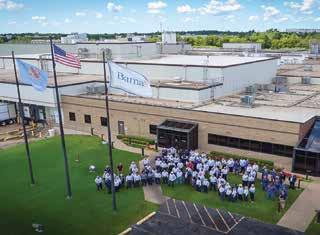
Pratt Energy is a fuel ethanol producer, turning corn and milo into fuel since 2013. Natural gas is a critical part of Pratt Energy’s distillation process. It powers the plant’s steam boilers, turbine generator and distilled grains dryer — all of which help Pratt Energy be part of a thriving local agriculture community. The efficiency and reliability of natural gas allow Pratt Energy to power steam boilers 24 hours a day resulting in cost and energy savings.
Tulsa, Oklahoma
Customer: Bama Companies
The Bama Companies is a leading producer of baked goods for many national quick service restaurants. These restaurants rely on Bama’s biscuits, pies and pancakes to feed millions, and Bama relies on natural gas to fuel its operations. Bama makes 2 million biscuits a day, an impossible feat without natural gas. A sustainable and affordable fuel, natural gas helps create a high-quality, low-cost product with fewer emissions compared with other forms of energy.
El Paso, Texas
Customer: Sun Metro
Sun Metro is El Paso’s public transportation provider, serving over 4 million customers in the area. Sun Metro converted its entire fleet of over 300 buses to be fueled by compressed natural gas (CNG), a clean-burning alternative to traditional motor fuels. These CNG vehicles have helped the city of El Paso reduce emissions and improve its air quality while saving millions in fuel costs.
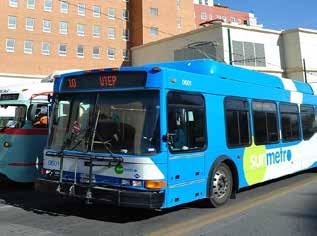
Emissions Reduction
Innovation and Technology
Addressing Fleet and Customer Emissions
Facilities
Environmental Stewardship

ONE Gas and our assets will be essential in realizing a carbon-neutral energy future. We have implemented practices, procedures and strategies to provide long-term safe, reliable and affordable natural gas service to our customers.
Emissions Reduction
Reducing our methane emissions is a key component of our business and environmental strategy. Reducing our methane emissions is a key component of our business and environmental strategy. The emissions reduction goals and targets we set are achievable and are supported by a long-term strategy grounded in understanding our current emissions profile and how best to leverage our existing assets and programs.
Our Scope 1 emissions reduction goal is driven by our pipeline replacement and protection plan. We continue to evaluate opportunities for further emissions reductions across Scopes 1, 2 and 3, including improving operational practices that reduce emissions, researching opportunities to replace geologic natural gas in our system with renewable natural gas, expanding energy efficiency and education programs, and implementing sustainable building initiatives. We also are evaluating future opportunities and technologies, such as carbon capture and the utilization of low-carbon hydrogen.
1 SCOPE
2 SCOPE
3 SCOPE
Scope 1 emissions are direct greenhouse gas (GHG) emissions from sources controlled or owned by an organization, such as our pipelines, meter sets and fleet.
Reducing Emissions from Mains and Services
ONE Gas has set a goal of achieving a 55% reduction in Scope 1 emissions across our enterprise due to leaks from distribution pipelines by 2035,, measured from a 2005 baseline* and accounting for projected system growth. We expect to achieve this goal primarily through our vintage pipeline replacement and protection program.
Investments in pipeline replacement supports system integrity, customer growth and Scope 1 emissions reduction.

Pipeline Replacement (miles)
Scope 2 emissions are indirect GHG emissions from sources controlled or owned by an organization, such as purchased electricity.
Scope 3 emissions are from sources not owned or directly controlled by an organization but related to its activities. This includes emissions from our customers' use of the natural gas we provide and emissions upstream of our system.
We have achieved a 48% reduction in Scope 1 CO2e emissions from distribution pipelines since 2005.
Utilizing the EPA-approved Greenhouse Gas Inventory Protocol, our estimated total emissions due to leaks from mains and services in 2022 was 149,315 metric tons of CO2e, compared to 289,070 metric tons of CO2e in 2005. This 48% reduction keeps us on track to achieve our 2035 goal. Pipeline replacement helps us maintain safe and reliable operations while decreasing emissions from our systems by replacing higher-emitting pipes with lower-emitting pipes.
*2005 is the year many U.S.-based businesses selected as a baseline for their emissions reduction goal under the Paris Agreement.
Note: Inventory based on data reported for 2022. Pipeline replacement due to future changes in state or federal regulations is not projected in 5-year replacement estimates. Annual pipeline replacement miles will vary from year to year, contingent upon factors such as replacement location (i.e., densely populated urban city vs. rural farmland), material type, etc.
• Of the $657 million in capital investments in 2022, nearly 70% was spent on system integrity and pipeline replacement projects.
• Replaced 460 miles of distribution mains, service lines and transmission lines in 2022.
• On average, replaced 220 miles of vintage pipelines per year since 2014.
In 2023, we adopted a new short-term incentive pay metric tied to the execution of our emissions reduction goal, driven by our pipeline replacement and protection program. We have made steady progress since announcing our emissions reduction goal in January 2022 and remain on target to reach the goal.
In addition to our pipeline replacement and protection program, we are focused on reducing operational emissions through advanced leak detection technology and damage prevention programs.
As a founding member of the Environmental Protection Agency's Methane Challenge Program, ONE Gas committed to replacing a minimum of 2% of our vintage materials annually — a target we've exceeded every year since the program started in 2016.

Innovation and Technology
ONE Gas has invested more than $11 million in researching and developing innovative natural gas technology solutions through its ongoing partnership with GTI Energy. The company contributed approximately $700,000 for technology development projects in 2022, supporting more than 84 active projects.
Renewable Natural Gas
Renewable natural gas (RNG) projects can capture methane from organic materials like food and animal waste, redirecting it away from the environment and removing gases from the atmosphere. Because RNG is chemically identical to geologic natural gas, it can be used in all current applications of natural gas.
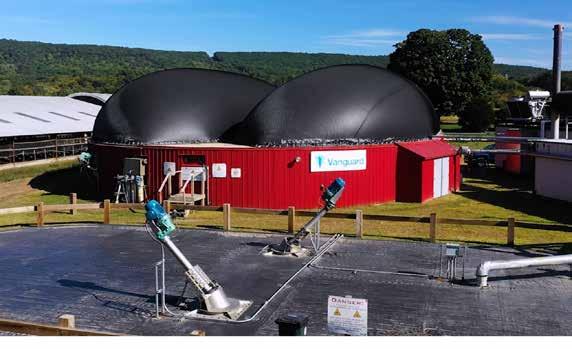
ONE Gas is developing opportunities across Kansas, Oklahoma and Texas to deliver RNG to customers thanks to the abundance of RNG feedstock in our service territory, including projects related to landfill and wastewater methane capture. These projects can provide a sustainable, renewable energy option for ONE Gas commercial and industrial customers to reduce emissions and achieve their ESG goals.
We continue to engage with customers looking for clean energy solutions and ways we can help them utilize the environmental benefits of RNG to meet their energy needs and sustainability goals.
We expect the demand for RNG to continue as residential, commercial and industrial transport customers look to reduce their emissions. In Oklahoma, we have regulatory authority to spend up to $5 million annually to purchase RNG as part of our natural gas supply portfolio and recover the cost through our purchased gas-cost mechanism. We've also developed a voluntary opt-in RNG tariff program for Oklahoma customers that will allocate RNG's costs and benefits to customers who choose RNG as their fuel source.
Hydrogen Technology
Using hydrogen as a fuel source has the potential for national and regional benefits for energy storage, resiliency and emissions reduction. The carbon intensity associated with different hydrogen production methods varies, and carbon intensity assessments of hydrogen production are still being studied and developed. In the meantime, we are investing in research with national laboratories and participating in industry partnerships so that we are ready to take advantage of hydrogen technology when low-carbon hydrogen is produced at scale.
H2@Scale
Along with GTI Energy and the University of Texas at Austin, ONE Gas participates in the H2@Scale hydrogen development project creating the first dedicated renewable hydrogen network to test and demonstrate hydrogen infrastructure safety and reliability. The project began construction in 2023.
Hydrogen Hubs
Clean hydrogen hubs create networks of hydrogen producers, consumers and local connective infrastructure to accelerate the use of hydrogen as a clean energy carrier that can deliver or store tremendous amounts of energy. Natural gas utilities are a natural partner to hydrogen hubs with decades of expertise and experience transporting gaseous fuels safely and reliably.
ONE Gas actively monitors four hydrogen hub concepts in our service territory and plans to participate when Department of Energy funding is announced.
Carbon Capture Technology
ONE Gas is a member of the Carbon Utilization Research Council (CURC), which engages with elected officials to promote the pursuit of carbon capture and other advanced technologies that can support the long-term, environmentally responsible use of natural gas and other geologic energy sources.
We also partnered with GTI Energy to explore methods for improving the efficiency of natural gas-fired appliances, such as boilers, water tanks and furnaces, while lowering CO2 emissions and providing a means to capture or convert the CO2 emissions into valuable products. These technology applications could improve the emissions profile of multi-family residences, like apartments or condominiums, and light commercial or industrial locations, like hospitals or cogeneration plants.
ONE Gas is a proud member of the Clean Hydrogen Future Coalition, which brings together diverse stakeholders to promote clean hydrogen as a critical pathway to achieving the United States’ decarbonization objectives. Learn more at cleanh2.org.
Commitment to ONE Future Addressing Fleet and Customer Emissions
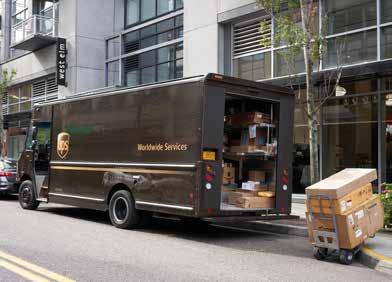
In 2022, we submitted our 2021 emissions data to Our Nation’s Energy Future (ONE Future), a group of natural gas companies working together to voluntarily reduce methane emissions intensity across the natural gas value chain to 1% or less by 2025. ONE Future released its results based on 2021 data in November 2022, reporting a methane intensity for all ONE Future members of 0.462%, well below the 1% methane intensity target. Methane intensity is defined as total methane emissions divided by gross gas production utilized by that sector. The methane intensity for the natural gas distribution sector, of which ONE Gas is a part, was 0.113%, beating the goal of 0.225% by 50%.
GTI Energy — Veritas
ONE Gas is a proud member of Veritas, GTI Energy’s methane emissions measurement and verification initiative. The Veritas program brings together more than 30 industry partners spanning the entire natural gas supply chain. Veritas is developing technical protocols that provide credible, comparable methane emissions measurement and verification for each segment of the natural gas industry (production, gathering and boosting, processing, transmission and storage, distribution and LNG).
The bulk of our Scope 3 emissions come from our customers’ use of natural gas. We empower customers to make the best energy decisions for their businesses, homes and communities. Our customers are in the best position to determine what is right for them as they consider the environment and their need for reliable and affordable energy. We are working to provide customers with options to reduce their carbon footprint through alternative fuel sources, which today is focused on RNG, and may, in the future, include hydrogen.
We are also working to strengthen and expand our energy efficiency programs to help our customers reduce their energy and water usage.
Energy Efficiency Programs
Our energy efficiency rebate programs help customers in Oklahoma and Texas make smarter energy choices that benefit them and the environment. In 2022, ONE Gas divisions issued 102,212 energy efficiency rebates in Oklahoma and Texas, totaling $15,000,939.
Our Energy Efficiency Programs Include:
• Low-income Energy Efficiency
• Home Improvement and Appliance Replacement Program


• New Home Program
• Commercial Direct Install Program
• Natural Gas Vehicle Rebate Program
• Water Conservation Program
• Strategic Energy Management Program
In addition to these formal programs, we invest in energy conservation education for our customers and communities. To promote this information, we regularly engage in multimedia education campaigns covering television, radio, print, billboards and social media. We also provide energy-saving tips on our websites and communications to customers, builders and service technicians.
2022 Energy Efficiency Program Highlights
18,516,511 gallons of water saved by customers
5,041,351 therms of expected annual energy savings
33,842 metric tons of CO2e reduced through our energy efficiency programs
Compressed Natural Gas for Customer Vehicles
Many states have incentives and tax credits available for CNG vehicle purchases, conversions or fueling station infrastructure.
102,212 rebates totaling $15,000,939 issued
Use of compressed natural gas (CNG) vehicles can help our customers reduce their carbon footprint when replacing gasoline, diesel fuel or propane in light-, medium- and heavy-duty natural gas vehicles (NGVs). CNG is one of the cleanest-burning alternative transportation fuels available at scale today,* producing the fewest GHG emissions of any major motor fuel.
In addition to such potential environmental benefits, purchasing an NGV also can have economic benefits. CNG is typically less expensive than gasoline and offers higher octane.
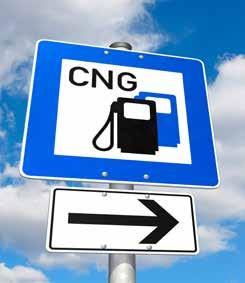
We offer incentives for personal and business purchases of dedicated or bi-fueled NGVs in Kansas, Oklahoma and Central Texas. Since 2015, we've provided more than 250 NGV rebates across our service territories.
Our public and private CNG fueling stations provide clean-burning CNG to vehicles across Kansas, Oklahoma and Texas. We transported 2.8 million dekatherms of CNG to stations in 2022. We continue to see growth in the heavyduty sector, with some school districts in Oklahoma and Texas transitioning their buses to CNG and building on-site fueling stations.
*Source: eia.gov/environment/emissions/CO2_vol_mass.php
2022 CNG Highlights
Reducing Emissions from Company-owned Fleet
Our Fleet team works diligently to lower Scope 1 emissions associated with company-owned and -operated vehicles by purchasing and deploying compressed natural gas-fueled vehicles where possible. We encourage employees who drive for the company to reduce idling time to reduce emissions further.
Compressed natural gas (CNG) is one of today's cleanest-burning alternative transportation fuels. Compared to gasoline or diesel, CNG can help reduce carbon dioxide emissions by up to 30% and carbon monoxide by as much as 85%.
Sustainable Building Practices
ONE Gas has incorporated sustainability considerations into our building standards for constructing new facilities to reduce our environmental impact.
Our greener building standards include the following requirements:
• Ceiling tile – 55% recycled content
• Toilet partitions – 16.5% recycled content
• Carpet tile – 100% recycled packaging content; 46% post-industrial recycled content
• Steelcase office chairs – 88% recycled content
• Steelcase workstation components – 71% recyclable; 48% recycled content
• ENERGY STAR-certified TVs and appliances
• Hot water tanks – ENERGY STAR rating of .095-.093
• High-efficiency HVAC units – 8 SEER or better (ENERGY STAR is 14.5)
• LED lights – luminous efficiency of 85%
4,560 metric tons of total Scope 2 emissions estimated from ONE Gas-owned and occupied facilities in 2022.
147 public and private CNG fueling stations in KS, OK and TX
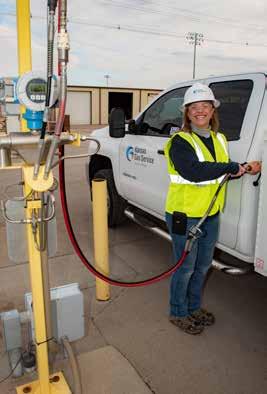
The use of CNG supplied by ONE Gas in 2022 avoided 50,880 metric tons of CO2e compared to the use of gasoline or diesel fuel, which is equivalent to removing more than 11,322 passenger vehicles from the road.*
43% of our company-owned fleet is CNG capable.
36 ONE Gas fueling stations
*Source: epa.gov/energy/greenhouse-gas-equivalencies-calculator-widget
Facilities
Transporting supply to 66 retail fuel service stations

Scope 2 emissions are indirect GHG emissions from sources controlled or owned by an organization, such as purchased electricity.
Transporting supply to 45 private CNG stations (bus fleets, delivery fleets, waste management fleets and more)
In 2022, we implemented software that allows us to calculate the Scope 2 emissions from purchased electricity in the buildings we own and occupy, which totaled approximately 4,560 metric tons of CO2e. As we better understand our Scope 2 emissions, we will be able to consider a goal for reducing those emissions.
In 2022, we completed an interior remodel at our headquarters in Tulsa for an Education & Training Area. All applicable sustainable building practices were used in the construction of the space.
Our Education & Training Area is fitted with a variety of energy-efficient enhancements, including:
Lighting Control System
• Automated lighting system to reduce energy consumption
• Brightness sensors automatically dim interior perimeter lighting to offset sunlight
Building Management System
• Automated thermostat control to reduce energy consumption
• Automated system improves HVAC efficiency and fresh air intake
Residential kitchen and seating (top photo) in ONE Gas’ Education & Training Area and commercial kitchen and appliances (bottom photo)
Environmental Stewardship

Being an environmental steward goes beyond reducing carbon emissions. We also strive to reduce our environmental impact in all of our operations. We participate in careful operational planning and partner with government agencies, non-government organizations and local nonprofits to avoid, limit or mitigate the impact on endangered species and their habitat. We also recycle scrap polyethylene (PE) in Oklahoma.
Habitat Conservation
When our growing service territory requires new development or significant construction projects, we consider biodiversity before work begins based on applicable regulatory requirements. The evaluation outlines the potential for the existence of threatened or endangered plants and animals and their habitat along our proposed project right-of-way.
If it is determined that habitat for a threatened or endangered species may be present, we perform a field study that may lead to further permitting and mitigation, as appropriate, before the construction phase can begin.


When completing a construction project, we work to restore the property to its original state or better. Improvements may include laying sod or reseeding with native vegetation, as appropriate and agreed upon with the property owner.
Water Management
While our operations are not water-intensive, we are committed to using natural resources responsibly. Our water management efforts include the following:
• Reducing water consumption in employee-occupied facilities with efficient flush valves

• Encouraging customers to reduce usage through our water conservation program

• Using captured stormwater to aerate ow-impact landscaping where appropriate
• Updating landscaping with water-friendly native plants and grasses
• Monitoring water use and disposal during our limited hydrostatic testing in accordance with Clean Water Act requirements, state regulation and permitting requirements and other regulatory requirements
ONE Gas strives for 100% compliance in all we do, including compliance with environmental regulations. The EPA did not issue any fines or notices of violation against ONE Gas for non-compliance with environmental regulations for 2022.
Supporting Biodiversity
ONE Gas is proud to financially support The Nature Conservancy and its work on the native plains of Oklahoma. Since 1986, The Nature Conservancy has worked to conserve more than 100,000 acres of Oklahoma’s magnificent landscapes and unique biodiversity. Through habitat restoration, protection and stewardship, The Nature Conservancy provides a standard for land management and restoration to the state’s native plains. The Joseph H. Williams Tallgrass Prairie Preserve in Oklahoma is the largest protected piece of tallgrass prairie left on earth. It is home to a herd of bison, a species that provides enormous benefits to the prairie and the native wildlife it supports.




